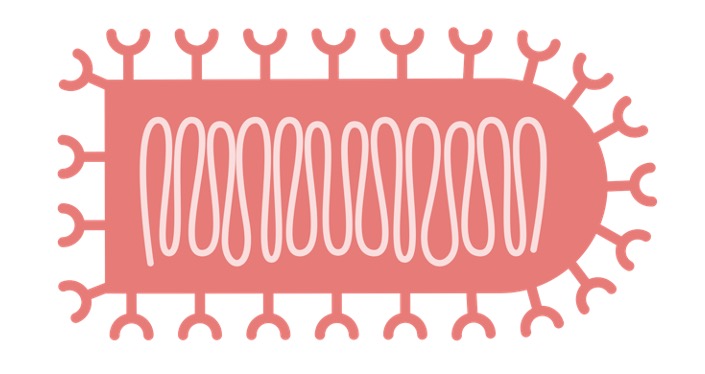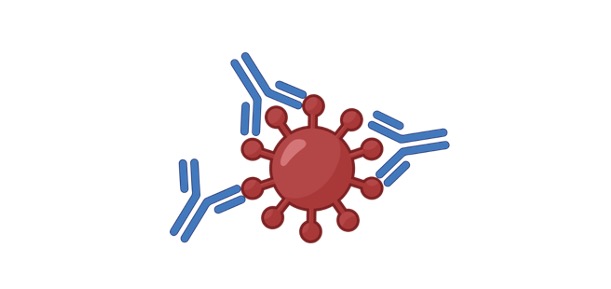Table of Contents
Rabies Virus
Dogs make wonderful pets and companions as they are loyal and charismatic. Dog bites are one of the serious concerns encountered during the domestication of dogs. Being bitten by a dog can break the protective skin barrier and microbes can gain entry and cause various infections and diseases. They act as vectors for many clinically important pathogens.
Rabies Transmission
Rabies is a deadly viral disease that can occur due to a dog bite. Not only can this be caused by a bite by an infected dog but it can also be transmitted by the infected saliva on exposure to a broken skin barrier. Besides these, the other routes also include the nose, mouth, and eyes.
This virus can be harbored by warm-blooded vertebrates like cattle, bats, raccoons, monkeys, etc. They can also transmit the virus to another host. This virus has evolved to adapt even in cold-blooded vertebrates. An incline in the domestication of dogs has posed risk for the transmission of these viruses to a human host.
Lyssavirus: a Rabies Virus
Rabies disease is caused by an RNA virus Lyssavirus that belongs to the family Rhabdoviridae and order Mononegavirales. This virus genome comprises of single negative-strand RNA and the shape of this virus resembles a bullet. This genome codes for all the required proteins like phosphoprotein, nucleoprotein, RNA polymerases, and glycoprotein.

The virus enters muscle or nerve cells through membrane fusion and receptor-mediated endocytosis with the help of glycoprotein G. In the intracellular space viral proteins like polymerase are translated inside the endosome.
By fusion, the RNA and proteins are released into the cytosol. The matrix proteins control the processes of replication and transcription of the viral genome. Polymerase enzyme helps in the replication of the genome along with the Negri body. Negri bodies refer to specialized inclusion bodies in the cytoplasm that helps in replication and transcription.
These bodies provide clinical proof of viral infection. The newly replicated genome forms a complex by binding with nucleoproteins known as ribonucleoprotein complex. This can lead to the formation of new viruses.
Rabies Types
There might be a burning sensation at the bite site known as paraesthesia. Other early signs of rabies include discomfort and fever. This virus can spread to the nervous system leading to behavioral alterations in the infected person.
Lyssavirus replicate within the muscle cells to replicate and then travel to the nervous system through the neuromuscular junctions. The virus can directly penetrate the peripheral nervous system directly and can then spread to the CNS.
In CNS they can cause inflammation of the spinal cord and brain that can be fatal. Based on the symptoms, rabies can be grouped as paralytic or furious. The most common one is furious rabies, where abnormal behaviors like confusion, paranoia, hallucinations, and hydrophobia are shown by the infected patient.
Paralytic rabies is more fatal as the entry of the virus by bite can cause paralysis in the affected person. If not treated both these types can lead to coma and in fatal conditions to death. The higher risks are associated with furious rabies as they can cause cardio-respiratory arrest. Death is highly likely in 2-10 days if no medical intervention occurs.
Rabies Pathobiology
The mechanisms employed by rabies to affect the nervous system have perplexed the research community for a long. During the 1990s, the mechanism of paralysis was extrapolated. The glycoprotein at the membrane surface of Lyssavirus has binding affinities with muscle receptors like nicotinic acetylcholine receptors and competes with neurotransmitter acetylcholine.
This similar mechanism has been elucidated for different receptors in the brain. This interference may have affected cell signaling and communication within the neurons leading to behavioral changes in the host.
Further Rabies Research
As a recent development, scientists at The Ohio State University Wexner Medical Center and the Ohio State University College of Medicine have conducted several studies in attempts to identify high-risk physical characteristics and the dog breeds that have a biting behavior with severe injury.
This empirical data can help to decide the safer pets to domesticate. More research needs to be done on this virus to prevent the annual death caused by this virus. Rabies vaccines are available and novel treatment methods are emerging. Early treatment is key to preventing death due to rabies disease.
Rabies Virus Citations
- Subversion of the Immune Response by Rabies Virus. Viruses . 2016 Aug 19;8(8):231.
- The spread and evolution of rabies virus: conquering new frontiers. Nat Rev Microbiol . 2018 Apr;16(4):241-255.
- Everything You Always Wanted to Know About Rabies Virus (But Were Afraid to Ask). Annu Rev Virol . 2015 Nov;2(1):451-71.
- Figures are created with BioRender.com







